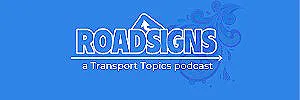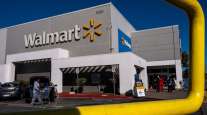Retail Sales Rise 0.4% in April

[Stay on top of transportation news: Get TTNews in your inbox.]
NEW YORK — Americans picked up their spending modestly in April, spending money online and dining out, buoyed by a solid job market and a retreat in prices for some things.
Car sales also rose despite prices that continue to soar, according to the Commerce Department report issued May 16. But consumers are facing plenty of challenges heading into the second half of the year from tightening credit to a weaker job market.
Retail sales increased 0.4% in April compared with March, when sales decreased 0.7%. That is the first retail sales increase since January, when unusually warm weather and a big jump in Social Security benefits juiced spending.
Retail sales data from the U.S. is not adjusted for inflation unlike many other government reports, so the headline increase only matched the monthly rise of 0.4% in the government’s consumer price index for April. That indicates that shoppers are struggling to keep up with inflation.
Sales at car and auto parts dealers rose 0.4%. Business at gas stations fell 0.8% despite an uptick in prices at the pump, suggesting Americans cut back on holiday and spring break travel.
Excluding car dealers and gas stations, retail sales rose 0.6%.
Spending increased 1.2% at online retailers and ticked up 0.6% at restaurants and bars. However, department stores, electronics stores, sporting goods and hobby stores, as well as home furnishings stores all saw declines.

Home Depot on May 16 projected its first decline in annual revenue since 2009 in the aftermath of the bursting of the housing bubble and financial crisis. The nation’s largest home improvement retailer cut its profit and sales expectations for the entire year.
“The April retail sales report shows consumers remain inclined to spend, though they are becoming more selective in their purchases,” said Oren Klachkin, lead U.S. economist at Oxford Economics. “However, with storm clouds gathering on the horizon, we think consumer spending will soon run out of steam.”
Americans have remained resilient in their spending even with signs of weakness elsewhere in the economy. A solid job market has contributed to that.
Yet there are signs that they are straining under the weight of higher prices, and the job market is likely to weaken in the second half, most economists believe.
Shoppers are continuing to trade down to cheaper brands as well and they’re pulling back on buying nonessential goods, reversing a pandemic trend.

Chad Crotty of DDC FPO Solutions discusses how fleets handle outsourced business services. Tune in above or by going to RoadSigns.ttnews.com.
Consumer prices in the United States rose again in April, and measures of underlying inflation remained high, implying that the retreat from sharply higher prices is likely to be slow and bumpy. Prices increased 0.4% from March to April, the government said in May, up sharply from a 0.1% rise from February to March. Compared with a year earlier, prices rose 4.9%, down slightly from March’s year-over-year increase. It was the smallest annual gain in two years.
Economists are watching how costs have impacted consumer spending, which accounts for a majority of U.S. economic activity. And the numbers from Home Depot were a rough beginning to a busy week of retail earnings, dragging down the entire sector and the Dow as well.
Walmart and Target report quarterly earnings this week. Major retailers have begun to offer more sales or they’re tweaking membership programs to win over hard-pressed shoppers.
For example, the nation’s largest consumer electronics retailer, Best Buy, is creating a three-tiered membership program next month, including a lower price option costing less than $50 per year.
“Consumer spending will likely be a headwind to economic growth in 2023, with volumes of goods purchases about flat, and services spending growing more slowly than in 2022 or 2021,” said Bill Adams, chief economist for Comerica Bank in Dallas.
— AP Economics Writer Chris Rugaber in Washington contributed to this report.
Want more news? Listen to today's daily briefing below or go here for more info:




